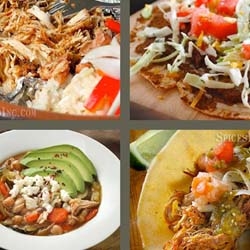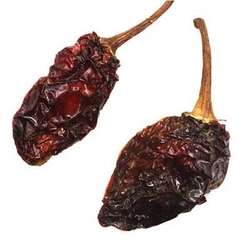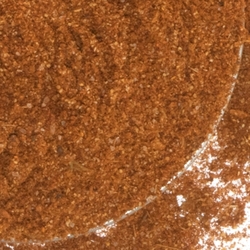Intro to Authentic Mexican Cuisine

Intro to Authentic Mexican Cuisine
I love Mexican cuisine. Real, true, authentic Mexican cuisine. I may have been lucky because I was never allowed to eat at Taco Bell growing up. If I wanted Mexican food we went to our local taquéria. Although my dad is 100% Polish, he instilled in me that if you want good food from a certain culture (like Mexican), you take the time to find the hole in the wall that transports you as soon as you step in the door. At the age of 10, I didn't enjoy this because the most authentic restaurants don't have games or toys that come with your meal. Looking back it definitely gives me an appreciation for the work and passion that goes into true Mexican cuisine.
When most Americans think of Mexican cuisine a few things may come to mind – Chipotle, Taco Bell, burritos and margaritas. Unfortunately these aren't the best representations of the cultural influences, hard work and fresh ingredients that go into authentic Mexican cuisine.
Mexican cuisine is a very broad term, although we don't always recognize this (think about all the different types of cuisine we have in America). For this reason I am going to give you an overview of the most popular cuisines from the most famous areas of Mexico. Although we know that a few of the most popular ingredients in Mexican cooking include avocados, corn, beans, squash, tomatoes and tomatillos, there are a number of unique ingredients that are specific to certain regions that we will cover. These regions include Puebla and Central Mexico, Oaxaca, Yucatan, Mexico City and Veracruz.
Puebla and Central Mexico
Puebla is the area of Mexico where the Spanish settled and officially made the land their own, so I think this is a pretty good place to start. The history of cuisine in Puebla stretches back to the Mesoamerican age, which stretches as far back as 7000 BC until the colonization by Spanish settlers in the 16th century. This is where amaranth was first domesticated and where maize was first grown for consumption (can you imagine Mexican cuisine without corn?!) As you could probably tell, fresh vegetables are very important when it comes to Mexican cuisine.
One of the most interesting types of fresh vegetables in Puebla is the variety of edible wild greens, also called quelities, which are used in everyday meals. The most popular of these vegetables is the paddle-shaped pad of the prickly pear cactus known as nopales. These nopales can be eaten raw, cooked, pickled or even used to make desserts such as ice cream. Some other notable wild vegetables include verdolagas, better known as purslane, and huauzontle which is most similar to broccoli.
Along with wild greens, Puebla is said to have some of the most delicious morel mushrooms in the world. This is great for mushroom lovers, but even better might be the huitlacoche that grows in this area. Huitlacoche is an edible sweet black fungus that grows on corn and can be cooked into salsas or eaten fresh in quesadillas. This fungus is so prized that farmers are willing to sacrifice certain amounts of corn in order to grow it, since the fungus damages the corn and cannot be eaten or sold.
Chiles are especially important in the culture and cuisine of Mexico, and Puebla is a good example of that. Here, chiles are used in a wide variety of ways including whole, chopped and added to sauces and salsas and even dried and ground into powder or added to other spices to create a rub. The uses of chiles in Mexico are almost endless. In Puebla, the most common chiles include poblanos, chipotles, serranos and pequins.
Oaxaca
Oaxaca, Mexico is sometimes called the land of seven moles (although there are many, many more in case seven isn't enough). This state is where the Zapotecs, Oaxaca's dominant ethnic group, created the griddle, or comal, which is traditionally used to make quesadillas. More than half of Mexico's indigenous Mesoamerican speakers also live in this state, which is divided into eight regions that are all geographically and culturally diverse.
When it comes to food, Oaxaca is just as diverse as the people who make and consume it. First we will start with chocolate and then move onto moles, because many moles would never be complete without their chocolate. The state of Oaxaca may be a chocolate lover's dream. It contains chocolate factories, chocolate houses and chocolate markets. In chocolate houses, chocolate bars are produced directly from cacao beans. Here you can sit and enjoy a cup of hot chocolate or some mole, and even have chocolate made specifically for you with your favorite ingredients.
Oaxaca, as mentioned earlier is the land of seven moles. These seven are Negro, Rojo, Coloradito, Amarillo, Verde, Chichilo and Manchamantel. Mole Negro is the "typical" mole served all over Mexico, and also found on most menus in the Mexican restaurants of America. This mole is savory – sweet and chock full of bitter, dark chocolate. Mole Negro contains the base ingredients of most moles which include onion, garlic, whole spices such as cinnamon, cloves, black pepper and cumin, dried chiles, seeds and chocolate. Other mole recipes may add or subtract some ingredients, but typically they all contain a variety of these base ingredients. Rojo mole (red mole) is also known as mole poblano, and is similar to black mole except with less chocolate. Instead, it is made sweeter and spicier by the use of different types of red chiles (pasilla, guajillo and ancho) as well as nuts and raisins. The next type of mole, Coloradito, or "a shade of red," is somewhere between rojo and negro in color. This brown mole, which contains the basic mole ingredient including chocolate, has a special secret ingredient for thickening and sweetness – fresh ripe plantains.
Next up we have Mole Amarillo (yellow) which doesn't contain any chocolate at all. This mole is slightly different from those that we have talked about already and is more similar to an Indian curry in color and flavor. Another mole that strays from the beaten path is Mole Verde. This mole is made with pumpkin seeds, tomatillos, fresh jalapenos, along with cilantro are the main ingredients in the mole. It can also be diluted with chicken stock to make a soupy sauce that is poured over chicken and mopped up with tortillas or bread. One of the most intense moles is Mole Chichilo. This dark and spicy mole is made with homemade beef stock along with de arbol, ancho and Guajillo chiles which creates a thick sauce that is excellent for braises. Last but not least is Mole Manchamantel. This mole, translated to English as "dirty tablecloth," sure lives up to its reputation with a bright red color and a decent amount of grease. This fiery mole is made with Mexican Chorizo Seasoning, tomatoes and ancho chiles. This mole is full of sweet, spicy flavor thanks to the addition of plantains and pineapple.
Yucatan
The Yucatan is located at the edge of Mexico's curling peninsula. This land, full of dense jungle, is very heavily influenced by Mayan culture. The moist, tropical climate made it difficult to keep food from spoiling so the people of Yucatan created unique dishes that are not found anywhere else in Mexico.
The region's most famous dish, which we had the pleasure of eating recently, is called pibil. Pibil is a dish of slow roasted pork that is coated in Recado Rojo and traditionally smoked in a pit. This meat is then topped with pickled red onions and can be served in a bowl or on tortillas. Although pork is the meat of choice in the Yucatan, you can also find locals eating turkey, quail and even armadillos.
Another famous foodstuff that Mexico, and specifically the Yucatan, is known for is their tamales. While we may know tamales to be wrapped in dried corn husks, cooks in the Yucatan and other southern states like to cook theirs wrapped in fresh banana leaves. These tamales are typically made from an outer "shell" of starchy dough that is usually corn based and stuffed with any variety of ingredients including meat, cheese, fruit, vegetables and chiles. They are then wrapped in corn husks or banana leaves and steamed. Two specific types of tamales are made in Yucatan that cannot be compared to tamales anywhere else. The first type is called tamales colados. These tamales use dough that has been strained so it has an extra smooth texture. The dough is then filled with a gravy mixture. This makes an extra soft tamale that almost melts in your mouth. The second type of famous tamale from this region is the dzotobichay .The name itself refers to the chaya plant which is a leafy green vegetable that is native to the area. These tamales are made of masa and lard and filled with ground squash seeds. They are then wrapped in the chaya leaves and steamed.
The Yucatan, like many other parts of Mexico, is highly influenced by their local selection of fruits and vegetables. In this region, Seville oranges can be found at every turn. The sour and acidic oranges are used in almost every type of dish in this area, from salsa and meat marinades to soups and salads. It is said that almost any meat can be marinated in a mixture of this sour orange juice and annatto seeds.
Mexico City
Compared to many other types of cuisine in Mexico, the food that is found in Mexico City is just as modern and diverse as the people who have immigrated there. The city if full of influences from all over because Mexico City is the number one city of migration in Mexico. When it comes to food, Mexico City is known for its street stalls and vendors where unique yet authentic Mexican cuisine can be found whether you are tight on time or money.
One popular street food in Mexico City is chicharróns. Unlike anything that can be found in America, these freshly sliced pork skins are fried in lard in very large pieces which can measure up to 3 square feet. These pork rinds are sold in their large size to customers who break off smaller pieces and eat them in the same fashion that Americans eat potato chips. Some people even consider it a challenge to buy a large piece of pork rind and finish the entire thing. If that isn't enough, consider the fact that hot sauce is usually used to flavor either "chip" as it is eaten. Vendors around the city sell either authentic chicharróns or fake chicharróns, which are flour based patties with toppings.
Another popular street food (which I wouldn't mind trying) is Pambazos. These sandwiches are made with hard white bread rolls that are soaked in guajillo chile sauce (to soften them) and then dried. The chile sauce gives the bread a bright red-orange color. Once dried, the rolls are cut and filled with diced potatoes, chorizo, sour cream, lettuce and queso fresco. Although these sandwiches are considered street food, they can most definitely be on the messy side. Because the bread has been softened by the chile sauce it becomes very delicate and will fall apart almost immediately after handling, so eat up!
Last but not least, when it comes to Mexico City street food, we can't leave out tacos al pastor. This is the most "chilango" (slang for "from Mexico City") type of food you can find. Inspired by the food of Lebanese immigrants, these tacos are made from marinated pork that is covered in a chile sauce and roasted on a split. The meat is then sliced into small pieces and wrapped in a taco along with onion and coriander.
Veracruz
Unlike Mexico City that has an innumerable amount of culinary influences, the Veracruz region of Mexico has three that are very distinct. Because of the region's location along the Gulf of Mexico, their main influences are indigenous, Spanish and Afro-Cuban. The location of Veracruz also takes advantage of their most prized natural resource, the Gulf of Mexico, which provides many types of seafood and a mild tropical climate which results in a variety of tropical fruit.
The most famous dish from Veracruz is Huachinango a la Veracruzana, or Veracruz-style red snapper. This dish is a good representation of the coastal influence and Spanish cooking style that is used on food in this region. Typically a whole red snapper is used for this dish. It is gutted, de-scaled and marinated in lime juice, salt, pepper, nutmeg and garlic. Once cooked, the snapper is served with roasted potatoes and white rice.
Another dish that is popular in Veracruz and has even ventured into Tex-Mex cuisine is Chiles Rellenos a la Veracruzana. This dish uses large jalapeno peppers that are stuffed with crabmeat that has been mixed with onions, tomatoes, olive oil, lime juice, salt and pepper. Chiles Rellenos is also a dish that is served in Puebla, but with poblano peppers instead of jalapenos.
One staple in Veracruz is their coffee. This coffee is not only used for brewing, but also used to flavor candy and baked goods. As the second largest producer of coffee in Mexico, Veracruz is home to 90,000 small producers. Coffee originally came to Mexico from Antilles in the 18th century but was not exported in large quantities until the 1870s. During the 1980s, coffee became Mexico's most profitable export and is currently the largest importer of coffee to the United States.
As you can see, Mexican cuisine is quite diverse, interesting and is not correctly represented by the various Americanized versions of many dishes. If you would like to try your hand at cooking some traditional Mexican cuisine some of our favorite recipes are:
| Arroz con Pollo | Mole Sauce (Negro) |
| Black Beans and Mexican Chorizo | Pozole Rojo |
| Carne Asada Marinade |



